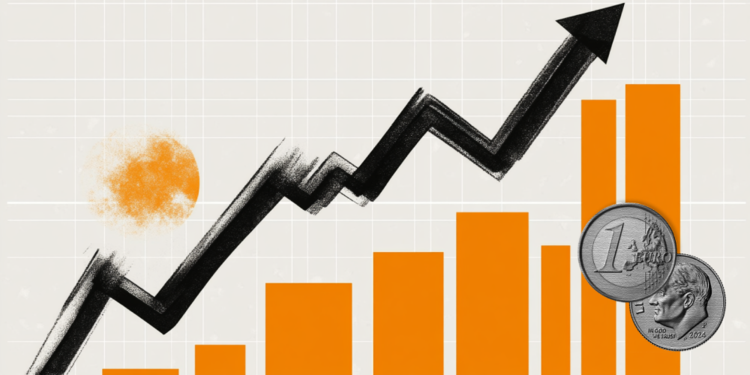- The Euro gains strength against the Dollar.
- European stocks remain positive so far.
- EUR/USD once again surpasses the 1.0700 barrier.
- The USD Index (DXY) is holding on to the 105.00 area.
- The Fed is expected to keep rates unchanged later on Wednesday.
- Weekly MBA Mortgage Applications will be published later in the American session.
- Enria, Schnabel, Jochnick, McCaul and Elderson of the ECB are expected to intervene.
The Euro (EUR) has recovered from Tuesday’s decline against the US Dollar (USD), allowing the pair EUR/USD regain stability and surpass the 1.0700 level on Wednesday.
Meanwhile, the Dollar is trading uncertainly near 105.00, as indicated by the USD Index (DXY). Market participants are exercising caution ahead of the crucial FOMC meeting scheduled for the North American session.
Market participants widely anticipate that the Fed will keep its interest rates steady amid growing speculation of rate cuts sometime in the second quarter of 2024.
On the European calendar, car registrations in the European Union (EU) rose 21.0% in the year to August, and producer prices in Germany rose 0.3% month-on-month in August and contracted 12.6% compared to the same month of the previous year.
In the United States, MBA mortgage applications rose 5.4% in the week to September 15, while the EIA will release its weekly report on US crude oil supplies later in the session.
Daily Market Summary: Euro Punches 1.0700, Eyes on FOMC
- The Euro recovers its buying interest against the Dollar.
- US and German bond yields are trading slightly defensive.
- The consensus among economists is that the Fed will keep rates unchanged on Wednesday.
- The PBOC left its 1- and 5-year prime rates unchanged.
- Markets continue to see likely rate cuts by the Fed in the first half of 2024.
- The stagnation of the ECB’s rate hike cycle appears to be gaining strength.
- UK inflation missed estimates in August.
Technical Analysis: The euro could still fall to 1.0630
EUR/USD resumes gains amid weekly instability and is expected to challenge the key 1.0700 zone.
Should EUR/USD break its September 14 low of 1.0631, there is a chance it could revisit the March 15 low of 1.0516 before the January 6 2023 low of 1.0481.
To the upside, there is a minor resistance level at the September 12 high at 1.0767 ahead of the more relevant 200-day SMA at 1.0828. If the pair manages to break above this level, it could continue its recovery to the 55-day SMA at 1.0916, before the August 30 high at 1.0945. If it breaks this last level, it could revisit the psychological level of 1.1000, followed by the August 10 high at 1.1064. Above said level, the pair could retest the July 27 high at 1.1149, before the 2023 high at 1.1275 seen on July 18.
As long as EUR/USD remains below the 200-day SMA, there is a chance that the pair will continue to experience bearish pressures.
Frequently asked questions about the German economy
What is the effect of the German economy on the Euro?
The German economy has a significant impact on the Euro due to its status as the largest economy within the Eurozone. Germany’s economic performance, its GDP, employment and inflation, can greatly influence overall stability and confidence in the Euro. If the German economy strengthens, it can strengthen the value of the euro, while if it weakens, the opposite happens. Overall, the German economy plays a crucial role in the strength of the Euro and its perception in world markets.
What is Germany’s political role in the eurozone?
Germany is the largest economy in the eurozone and, therefore, an influential player in the region. During the eurozone sovereign debt crisis in 2009-12, Germany was instrumental in creating several stability funds to bail out debtor countries. After the crisis, it took a leading role in implementing the “Fiscal Compact”, a set of stricter rules to manage the finances of Member States and punish “debt sinners”. Germany spearheaded a culture of “financial stability” and its economic model has been widely used as a model of economic growth by the other members of the eurozone.
What are German bunds?
Bunds are bonds issued by the German government. Like all bonds, they pay their holders a periodic interest payment, or coupon, followed by the total value of the loan, or principal, at maturity. Since Germany has the largest economy in the Eurozone, Bunds are used as a benchmark for other European government bonds. Long-term Bunds are considered a sound and risk-free investment as they are backed by the full faith and credit of the German nation. For this reason, investors consider them a safe haven, which appreciates in times of crisis and falls in periods of prosperity.
What are German bond yields?
German bond yields measure the annual return that an investor can expect from holding German government bonds, or Bunds. Like other bonds, Bunds pay their holders interest at regular intervals, called a “coupon,” followed by the total value of the bond at maturity. While the coupon is fixed, the Yield varies as it takes into account changes in the price of the bond, so it is considered a more accurate reflection of profitability. A decrease in the bund price increases the coupon as a percentage of the loan, resulting in a higher Yield and vice versa for an increase. This explains why the Bund Yield moves inversely to prices.
What is the Bundesbank?
The Bundesbank is the central bank of Germany. It plays a key role in the implementation of monetary policy in Germany and, in general, in the central banks of the region. Its objective is price stability, that is, keeping inflation low and predictable. It is responsible for ensuring the proper functioning of payment systems in Germany and participates in the supervision of financial institutions. The Bundesbank has a reputation for being conservative and prioritizes the fight against inflation over economic growth. It has influenced the creation and policy of the European Central Bank (ECB).
Source: Fx Street
I am Joshua Winder, a senior-level journalist and editor at World Stock Market. I specialize in covering news related to the stock market and economic trends. With more than 8 years of experience in this field, I have become an expert in financial reporting.







